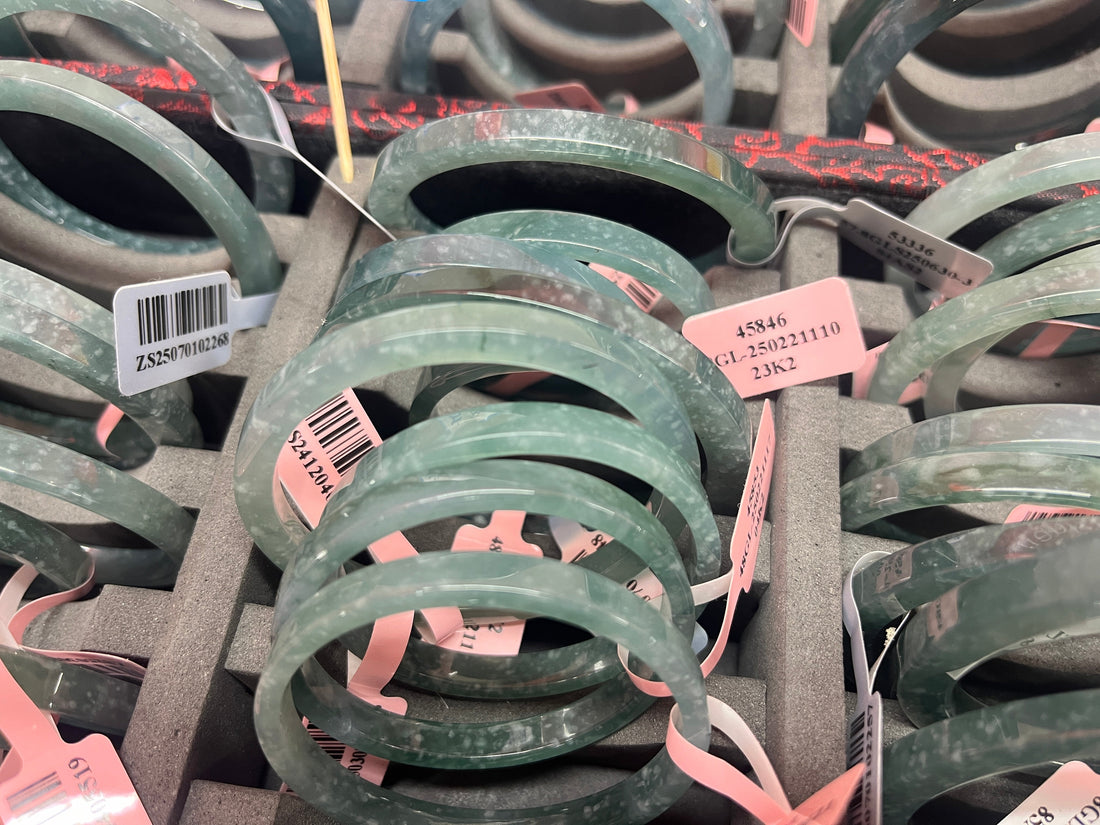
Myanmar vs. Guatemala: A Side-by-Side Gemological Comparison
When it comes to green jadeite, origin isn’t just a matter of geography—it shapes the stone’s appearance, composition, and energy. While Myanmar has long held the crown in the jadeite world, Guatemala’s green jadeite has gained increasing attention for its distinct characteristics. Let’s explore how these two origins compare under the lens of gemology.
🌿 Color and Transparency
Myanmar jadeite is renowned for its vibrant green hues—ranging from translucent “imperial green” to more mottled apple green and rich emerald tones. These stones often exhibit higher color saturation and brightness, with visible green “cores” in cross-section. Many fine-quality stones are semi-transparent to translucent, giving them a luminous, watery depth.
In contrast, Guatemalan jadeite typically displays deep grayish-green to bluish-green hues. These tones are usually darker and more subdued than those from Myanmar, with a lower brightness level. The overall impression is more muted and earthy, often accompanied by opaque to semi-transparent textures.
🔬 Inclusions and Microstructure
Microscopically, Myanmar jadeite shows:
-
Fine fibrous interlocking texture
-
White snowflake-like inclusions (often feldspar)
-
Occasional brown flaky minerals and dark columnar inclusions
These features reflect a cleaner crystalline formation, often with a vitreous luster.
Guatemalan jadeite, by contrast, tends to have:
-
Clustered or irregular dark mineral inclusions
-
Metallic luster under reflected light (especially from iron-rich minerals)
-
White, thread-like veins or patches
-
Granoblastic or brecciated textures
Some samples even contain carbon inclusions, giving them a smoky appearance.
🔍 Side-by-Side Summary
|
Attribute |
Myanmar Jadeite |
Guatemala Jadeite |
|---|---|---|
|
Color |
Bright green, rich saturation |
Deep grayish-green, bluish-green |
|
Transparency |
Semi-transparent to translucent |
Opaque to semi-transparent |
|
Texture |
Fibrous, glassy |
Granular to brecciated |
|
Luster |
Vitreous (glassy) |
Vitreous to slightly metallic |
|
Inclusions |
Snowflake feldspar, brown flakes |
Dark metallic spots, white veins |
|
Microscopic Clarity |
Generally cleaner |
More mineral inclusions |
🧠 Why This Comparison Matters
For collectors and conscious buyers, understanding these visual and structural differences provides greater appreciation and confidence. Whether you’re drawn to the radiance of Burmese jade or the earthy mystique of Guatemalan jade, each carries a unique story written in its crystalline DNA.
